Image processing for quality assurance
Embedded vision, Gig-E and 3D cameras, frame grabbers, CMOS sensors, etc. to avoid errors and determine position

Image processing for quality assurance
Embedded vision, Gig-E and 3D cameras, frame grabbers, CMOS sensors, etc. to avoid errors and determine position
Here you will find new developments from the industrial sector Image Processing for the Quality Assurance in mechanical engineering and plant engineering as well as for special industries. We provide information about image processing systems such as embedded vision, Gig-E and 3D cameras, frame grabbers, CMOS sensors and much more. The components and methods for image processing are used, among other things, to avoid errors or to determine position and orientation in the Industry 4.0 Production.
Contents
Image processing systems are used in industrial applications such as for quality assurance in automated systems, for example when bottles to be filled in the beverage industry are monitored for their fill levels. Image processing systems can also be used in non-industrial areas like in traffic engineering or in sport.
Industries like that Automotive industry often relies on image processing due to its high level of automation. Other special applications can be found in the Technical Building Services, Medical Technology, food technology or Microsystems Technology. You will find excerpts below New developments.
From simple components such as an industrial camera to highly complex image processing systems, the quality in industrial production is guaranteed by image processing. The implementation is very versatile, for example on production lines or filling and packaging systems. We present you here the Industry 4.0 innovations image processing.
Rauscher now has the TDI line camera from the Korean manufacturer views in the sales program. This CMOS / CCD line scan cameras have hybrid Sensorsthat combine the best from the CCD and CMOS sensor world. The fast Camera Link and Coaxpress line scan cameras have up to 256 TDI stages, which guarantee maximum sensitivity.
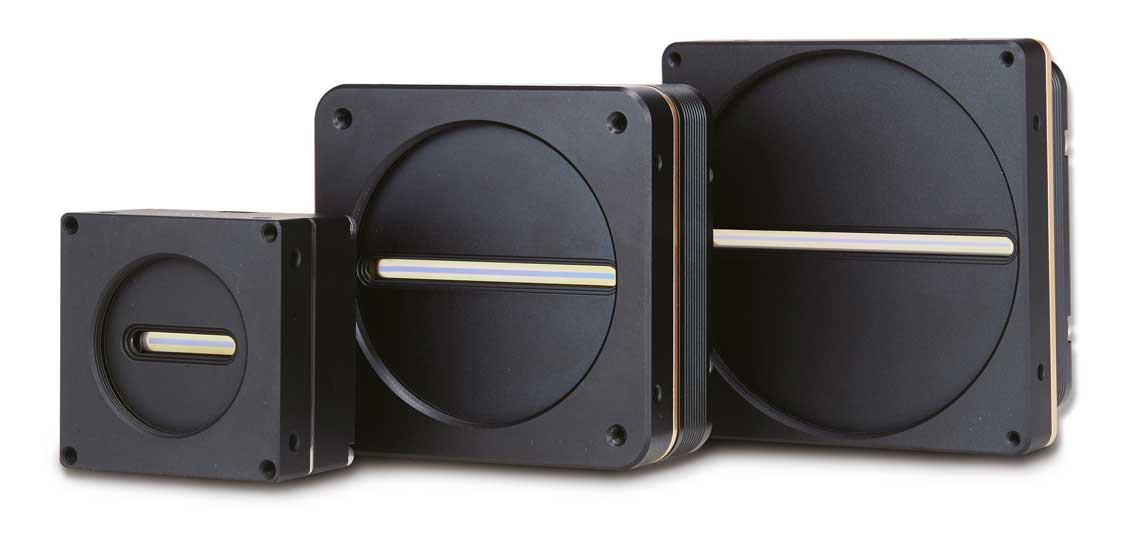
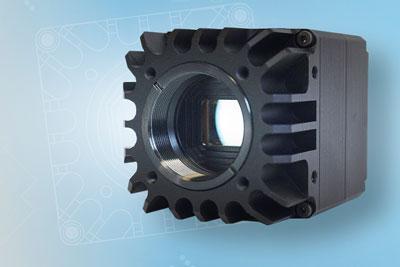 The "NIT Widy Sens SWIR" cameras with dual-mode "InGaAs" sensors from Rauscher offer a compromise between high sensitivity due to linear response and high dynamics at 120 dB with logarithmic response. 230 frames / s and synchronous image acquisition in the ns range are further features of the camera.
The "NIT Widy Sens SWIR" cameras with dual-mode "InGaAs" sensors from Rauscher offer a compromise between high sensitivity due to linear response and high dynamics at 120 dB with logarithmic response. 230 frames / s and synchronous image acquisition in the ns range are further features of the camera.
The Scarlet 3D stereo camera (Sales Rauscher) by Nerian is currently the fastest stereo vision and 3D depth camera with the highest image resolution on the market. Predestined applications can be found in the Agricultural engineering, Robotic, Bin picking, pick-and-place as well as for autonomous driving or in self-driving cars. Details on this and another stereo camera can be found here:

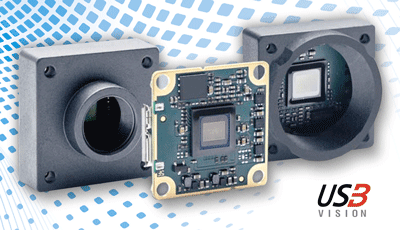 The Basler "Dart Boardlevel" cameras (distributed by Rauscher) are among the few board-level cameras that currently conform to the USB3 Vision standard and offer correspondingly secure data transmission and easy integration into image processing systems. With the USB 3.0 interface, you use the convenient plug-and-play functionality, receive data and power via a cable and a high bandwidth of up to 350 MB / s for maximum utilization of the sensor performance.
The Basler "Dart Boardlevel" cameras (distributed by Rauscher) are among the few board-level cameras that currently conform to the USB3 Vision standard and offer correspondingly secure data transmission and easy integration into image processing systems. With the USB 3.0 interface, you use the convenient plug-and-play functionality, receive data and power via a cable and a high bandwidth of up to 350 MB / s for maximum utilization of the sensor performance.
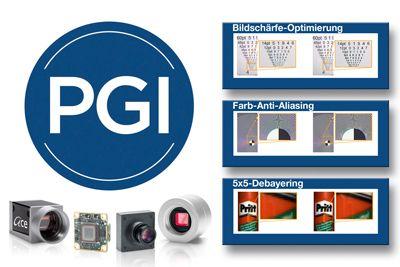 In order to further improve the image quality of industrial cameras, Basler (Distribution Rauscher) offers the PGI feature set with all new ACE, Dart and Pulse cameras and thus a powerful, patent-pending in-camera image optimization. The unique selling point of PGI is the combination of image sharpness optimization, noise reduction, color anti-aliasing and 5 x 5 debayering.
In order to further improve the image quality of industrial cameras, Basler (Distribution Rauscher) offers the PGI feature set with all new ACE, Dart and Pulse cameras and thus a powerful, patent-pending in-camera image optimization. The unique selling point of PGI is the combination of image sharpness optimization, noise reduction, color anti-aliasing and 5 x 5 debayering.
The "PXV" 2D absolute positioning system from Pepperl + Fuchs has reached a new level of performance in terms of reliability and handling. With its large reading window, it keeps a sufficient number of codes in view even at points and when the code tape jumps. Precise positioning is guaranteed at all times.
 Five new models with 10 GigE vision compliant interface for using optical cables expand the industrial cameras of the LX series from Baumer. The cameras are suitable for applications that require a high bandwidth of 1,1 GB/s over large distances. Depending on the SFP+ module used, long-distance solutions of up to 10 km can be implemented - completely without Media converter.
Five new models with 10 GigE vision compliant interface for using optical cables expand the industrial cameras of the LX series from Baumer. The cameras are suitable for applications that require a high bandwidth of 1,1 GB/s over large distances. Depending on the SFP+ module used, long-distance solutions of up to 10 km can be implemented - completely without Media converter.
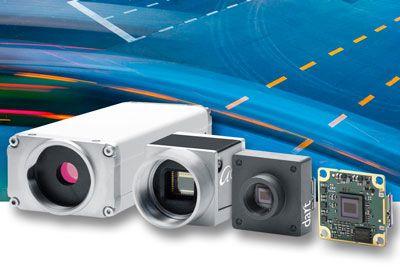 Basler (Distribution Rauscher) is expanding its camera portfolio for intelligent traffic systems twice: The "Dart" series is an inexpensive camera that is reduced to the essentials and is suitable for simple traffic applications. For more demanding systems, Basler integrates the powerful Sony "IMX174" and the "Python 5000" sensor from ON Semiconductor in selected Ace cameras.
Basler (Distribution Rauscher) is expanding its camera portfolio for intelligent traffic systems twice: The "Dart" series is an inexpensive camera that is reduced to the essentials and is suitable for simple traffic applications. For more demanding systems, Basler integrates the powerful Sony "IMX174" and the "Python 5000" sensor from ON Semiconductor in selected Ace cameras.
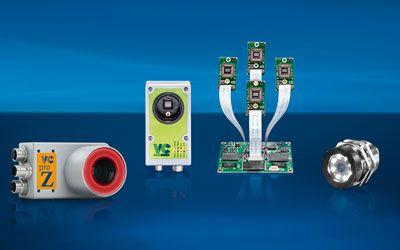 Vision Components can now also come up with user-friendly standard software for all industrial image processing tasks for the ARM-based smart cameras of the Z series: Halcon Embedded with its integrated development environment and comprehensive library for blob analysis, morphology, matching, measurement, identification and much more was successful ported the new camera models.
Vision Components can now also come up with user-friendly standard software for all industrial image processing tasks for the ARM-based smart cameras of the Z series: Halcon Embedded with its integrated development environment and comprehensive library for blob analysis, morphology, matching, measurement, identification and much more was successful ported the new camera models.
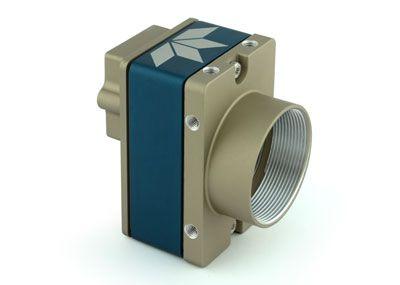 Teledyne Dalsa (Distributed by Stemmer Imaging), the GigE Vision camera for industrial image processing, "Genie Nano", offers a range of functions that increase performance while reducing complexity and costs. The set of camera modes combines unparalleled image processing with data transfer rates beyond the GigE limit. An extended operating temperature range is available to the user in a small and lightweight housing.
Teledyne Dalsa (Distributed by Stemmer Imaging), the GigE Vision camera for industrial image processing, "Genie Nano", offers a range of functions that increase performance while reducing complexity and costs. The set of camera modes combines unparalleled image processing with data transfer rates beyond the GigE limit. An extended operating temperature range is available to the user in a small and lightweight housing.
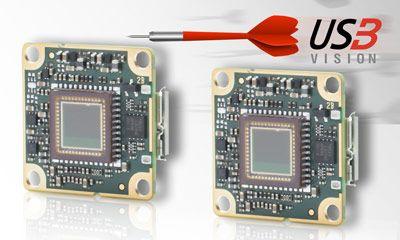 Basler (Distribution Rauscher) has expanded the "Dart" camera series: the daA1600-60um and daA1600-60uc with the e2v sensor EV76C570 offer outstanding image quality. This e2v sensor with a pixel size of 4,5 x 4,5 µm offers a maximum image circle of 1 / 1.8 inch and is the largest sensor in dart cameras.
Basler (Distribution Rauscher) has expanded the "Dart" camera series: the daA1600-60um and daA1600-60uc with the e2v sensor EV76C570 offer outstanding image quality. This e2v sensor with a pixel size of 4,5 x 4,5 µm offers a maximum image circle of 1 / 1.8 inch and is the largest sensor in dart cameras.
 Basler is expanding its ACE industrial camera series (Rauscher distributor) with 20 new, high-resolution cameras. This increases the series to over 120 cameras, making it the largest camera series in the industrial image processing market. For better differentiation, the ACE series is classified into the three product lines Classic, U and L.
Basler is expanding its ACE industrial camera series (Rauscher distributor) with 20 new, high-resolution cameras. This increases the series to over 120 cameras, making it the largest camera series in the industrial image processing market. For better differentiation, the ACE series is classified into the three product lines Classic, U and L.